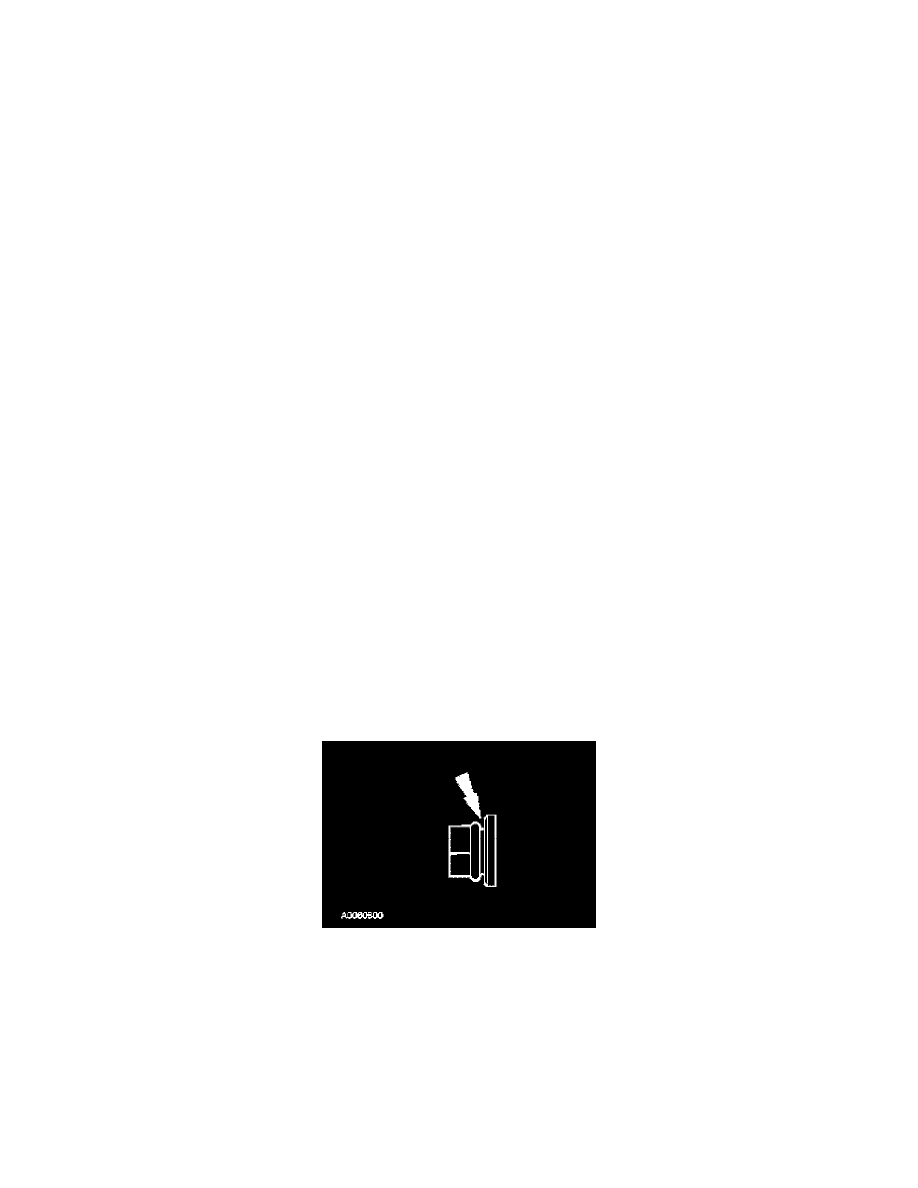F 250 4WD Super Duty V10-6.8L VIN Z CNG (2003)

Wheels: Service and Repair
Single Wheel and Tire
Wheel and Tire Single
Removal
WARNING: Use only the integral two-piece swiveling wheel nuts. Do not attempt to use cone-shaped one-piece wheel nuts on these vehicles. If used,
cone-shaped one- piece wheel nuts can come loose in vehicle operation. Do not attempt to use past model wheels, which have cone-shaped wheel hub
bolt nut seats, on this vehicle. Do not attempt to use present design wheels and wheel nuts on past model wheel hubs. Attempted use of intermixed
wheels can lead to damage to the wheel mounting system and could result in wheels coming loose.
1. Remove the wheel cover if equipped.
2. CAUTION: Do not use heat to loosen a seized wheel nut. ileat can damage the wheel and wheel bearings.
NOTE:Do not remove the wheel nuts at this time.
With the weight of the vehicle still on the tires loosen the wheel nuts.
3. Raise the vehicle until the wheel and tire assembly clears the floor.
4. Remove the wheel nuts.
5. Remove the wheel and tire assembly.
Installation
1. WARNING: When a wheel is installed, always remove any corrosion, dirt or foreign material present on the mounting surfaces of the wheel or the
surface of the front disc brake hub and rotor that contacts the wheel. Installing wheels without correct metal-to-metal contact at the wheel
mounting surfaces can cause the wheel nuts to loosen and the wheel to come off while the vehicle is in motion, resulting in loss of control.
Position the wheel and tire assembly on the vehicle.
2. CAUTION: Do not apply motor oil to the wheel nut threads or the wheel stud threads.
On all two-piece flat wheel nuts, apply one drop of motor oil between the flat washer and the nut. If corrosion exists, or the integral two-piece
swiveling wheel nut does not rotate freely, install new swiveling wheel nuts as necessary.
Install the wheel nuts loosely.
3. Turn the wheel until one wheel nut is at the top of the wheel hub bolt circle. Tighten the wheel nut until snug. In a crisscross-type pattern, tighten
the remaining wheel nuts until snug to minimize runout.
4. Lower the vehicle.
5. CAUTION: Failure to tighten the wheel nuts in the sequence shown can result in high wheel and tire runout, which will speed up the development
of brake roughness, shudder and vibration.
CAUTION: Torque specifications are for nut and bolt threads that are free of dirt and rust. Use only Ford-recommended replacement fasteners.
With the weight of the vehicle on the tires, tighten the wheel nuts to specification in the sequence shown.
